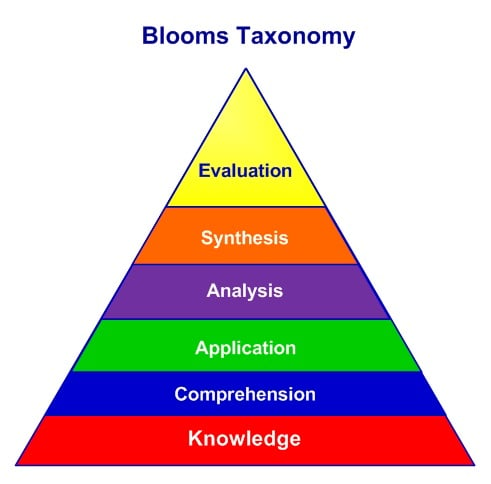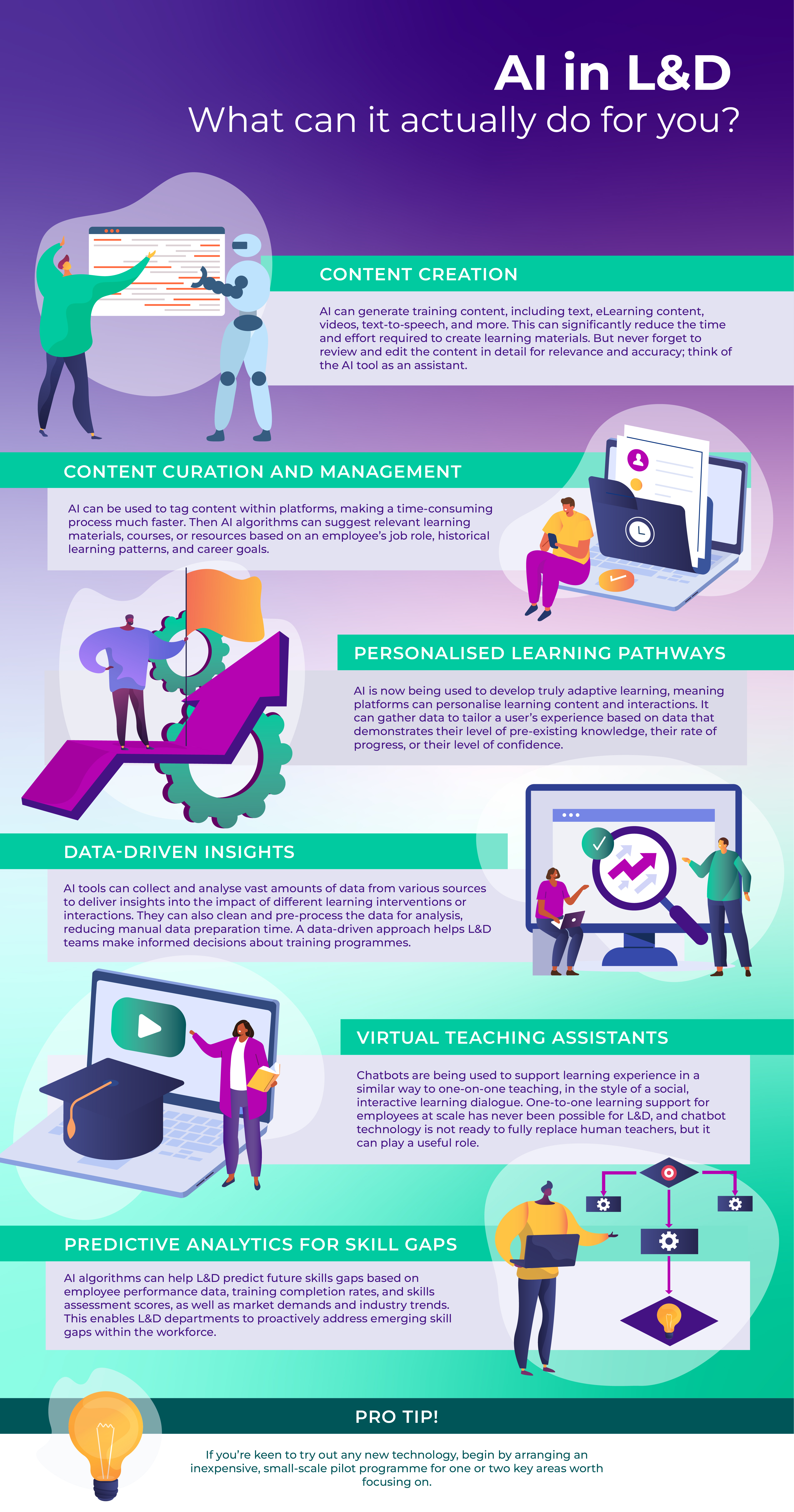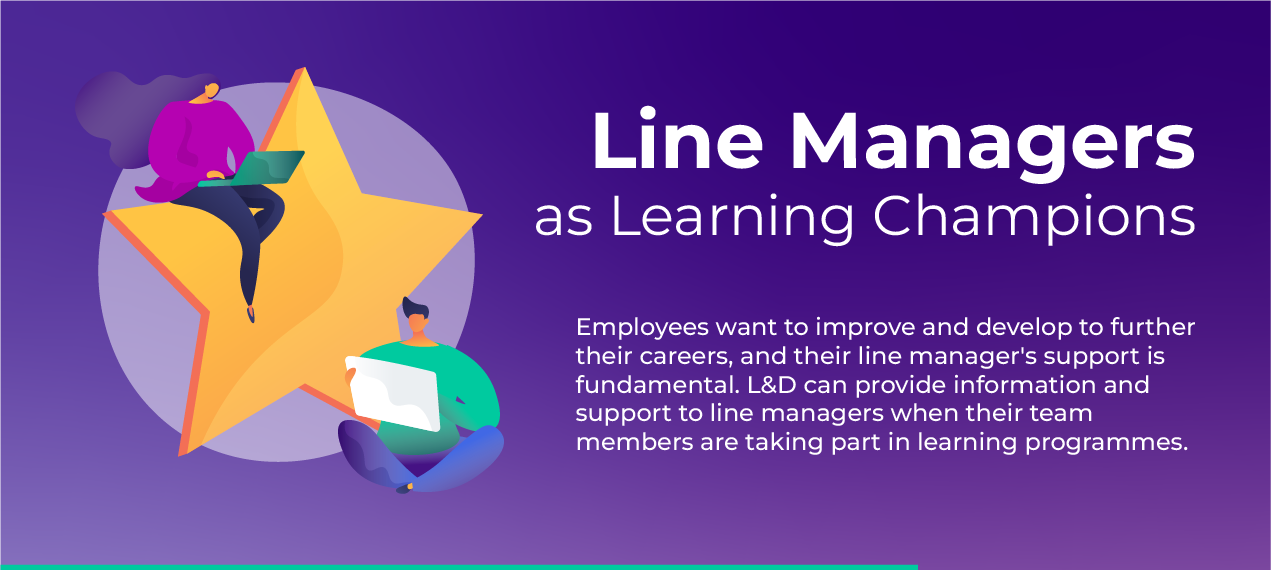The word ‘objective’, as used to describe an aim or goal, is a 19th century military term, but the field of learning is not a battlefield, so we should tread carefully (i.e. not jackbooted) in this terrain. We want our learning objectives to survive contact with reality. Picture a trainee school teacher clutching a lesson plan after the lesson has ended and thinking how perfectly it would all have gone if it hadn’t been for those pesky kids.
And while we are fussing over words, a little housekeeping first: we say learning objectives where some might say learning outcomes - and we mean by that, the specific and measurable means of delivering a learning goal.
Bloom’s Taxonomy Learning Objectives
Likewise with the famous ‘Bloom’s taxonomy’, which classifies learning objectives in terms of a hierarchy, with knowledge at the bottom of the cognitive domain, followed by comprehension, application, etc., up to evaluation at the top. This can be helpful in terms of aligning objectives with the competency level of your target audience - at the most basic level, just knowing new information, then showing an understanding of it, then demonstrating an ability to apply this new knowledge, and so on.
 Of course, it’s nice to have clear-cut distinctions such as these, but the human mind isn’t as neat and tidy as all that. Do these categories really function separately from one another, or are they not all part of a cognitive mix?
Of course, it’s nice to have clear-cut distinctions such as these, but the human mind isn’t as neat and tidy as all that. Do these categories really function separately from one another, or are they not all part of a cognitive mix?
Benjamin Bloom has had an enormous impact on our thinking around the objectives of any learning process, but his theories - even in the later revised Bloom’s taxonomy - have their critics: one of these, Donald Clark, has remarked that ‘Using Bloom is barely more useful than phrenology when actually designing useful learning.’
What you want your learning objectives to do is, first of all, guide you in the design of the learning; and secondly, make clear what new things the learner will be able to do after the training.
And the key phrase here is ‘to do’. Anyone responsible for devising smart learning objectives will know to use action verbs such as ‘show’, ‘name’, ‘explain’, ‘describe’, ‘interpret’, ‘distinguish’ and ‘assess’. If you are writing learning, you might have to fight for these words - very often, the client or subject matter expert will insist that the primary objective of the training is that learners should, by the end of it, be ‘aware’ of something or other.
Your motto should always be, not ‘aware of what?’, but ‘aware for what?’ After all, no company would waste money on making random strangers on the street aware of some piece of knowledge - they want their employees to be aware of it so that, armed with this new knowledge, they will act in a certain way.
Learning Objectives Examples
Let’s say the client loosely defines an aim of a piece of learning as ‘To be aware of data privacy changes’. Drill down deeper, add an action verb, and this might metamorphose into ‘Handle confidential information securely’. Drill down even deeper by looking at the actual work that the learners do, add a measurable verb, and this might become ‘Determine a lawful basis before you begin to process personal data’. Make sure you are clear about the learning requirements even when the client isn’t.
So, that’s a little bit of the theory, but what about some practical guidelines? You will easily find variations of such lists online, but here are the top tips I wish I’d been told when I first ventured into the transformative realm of instructional design:
-
Rewrite the client’s learning objectives.
-
As much as you want to meet your client’s expectations, you don’t want to do so uncritically - after all, there are good reasons why you have been hired to do the job. The client’s stated learning objectives will very likely need to be redefined so as to be active, specific and (where possible) measurable.
Describe what the learner will be able to do as a result of the training.
Don’t just go through the motions of sticking in a verb at the start of each objective, but think through what actions the training will enable the learners to perform.
Make the learning achievements realistic and achievable.
In this age of microlearning, we know that we must avoid cognitive overload.
Think ahead as to how you will measure the learning objectives.
This will help frame the objectives in the first place as well as assist the post-project evaluation. Remember to tie in knowledge checks and the final assessment to the learning objectives.


One question you may have is whether to list the learning objectives at the start of the training. The argument for this common practice is that it gives the learner a clear sense of what they are about to do and why.
And the main argument against is that it’s a deadly dull way to start off - you risk losing the learner’s goodwill just at the point when you need to engage it most; besides, the learner will probably know in advance what the learning objectives are, whether from the LMS or a boss’s directive or L&D’s invitation. A safer bet is to reframe the objective in simple, conversational language, like so:

Think how much more dryly that description would have read when it was set out in bullet points inside a course outline. And with those bullets we are back to the militaristic origins of the word ‘objective’.
While the advice we’d give isn’t to be a conscientious objector to using objectives - they have a very useful role to play in learning - we do recommend demilitarising them. So, ditch the bullets and the bayonet-dashes and the stand-to-attention formal language, and see learning objectives for what they are: guiding lights on the learning journey.










Was this article helpful?